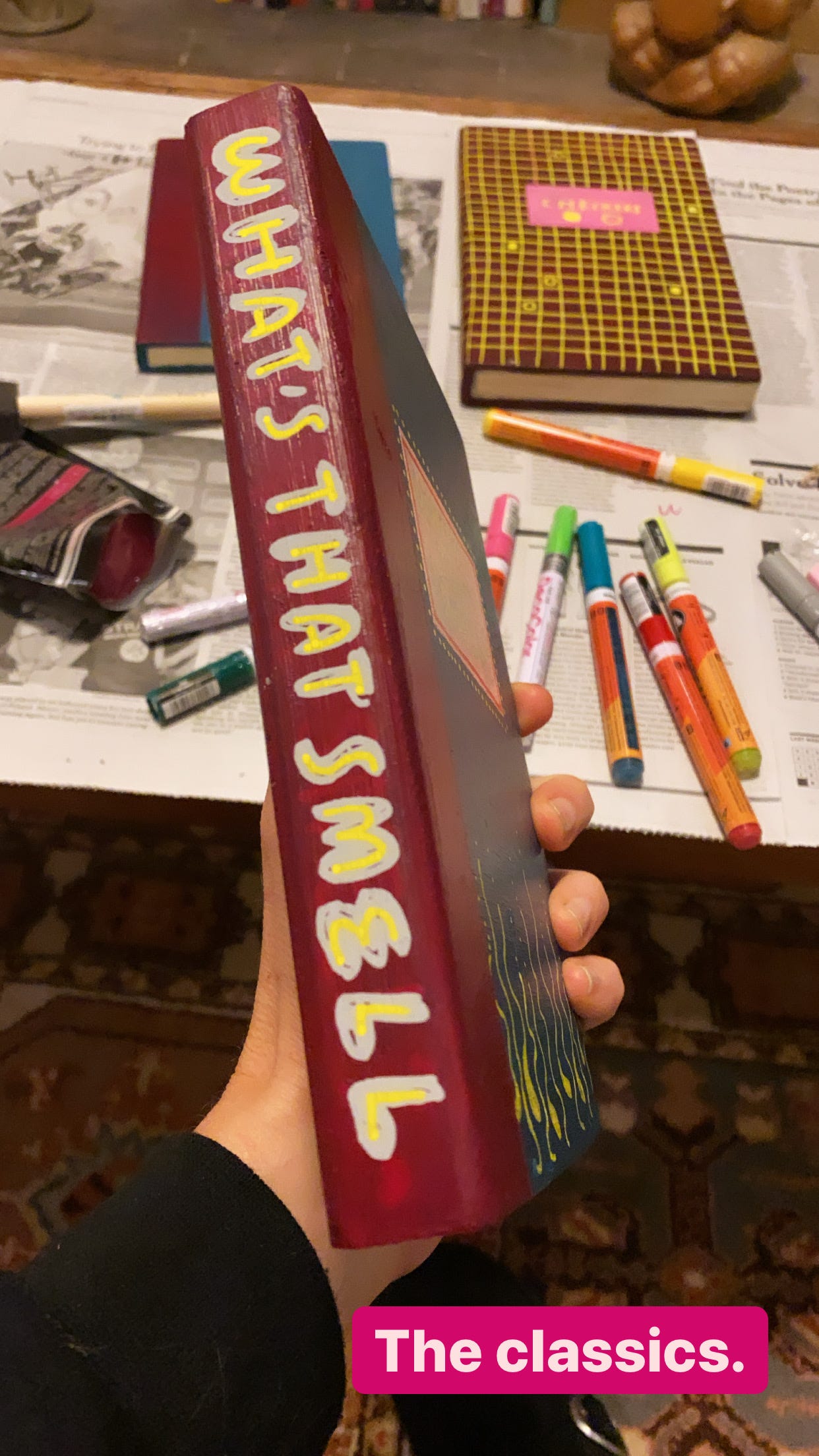Hellooooooo Grown-Ups Table friends!
How are you feeling after our epic 30 days of drawing?? Proud? Surprised? Connected? Creatively-charged? All of the above? I hope so. As I said in our GUT Graduation speech, I am beyond inspired by your bravery and open-heartedness. No matter if you drew for 1 day or 30, you started off the year with a creative leap. You made something with your hands. And that, my friends, is a strong foundation upon which to build a year, not to mention a creative life. Good job, you.
A little personal news over here: I’m sick. The day after we celebrated, I got clobbered by a nasty virus. I’m on day 4 of no voice! The irony of this happening after blabbing at y’all for 30 days is not lost on me.
So minding the universe’s smackdown and instruction to rest, I’m pulling this week’s dispatch from deep within the GUT archives. We’re going to revisit one of my all-time favorite GUT lessons and prompts: Imaginary Books. But before we get started, I thought it would be good to offer a few tips and opportunities to keep the 30-day energy/creative momentum going:
Take moment to check in with GUT community in the intros: welcome newcomers and high five some long timers. As a GUT member, you are part of a deep, dynamic network of humans all around the world who use drawing and creativity to connect with the world, each other, and ourselves. Judging by the smiles on our faces on 30-day graduation day, it’s working.
Draw throughout the week with the GUT. The DrawTogether Grown-Ups Table (aka The GUT) arrives in your inbox every Sunday. Members get access to drawing prompts and the GUT community chat where we share our drawings and support one another. It’s like the 30-days, but chill. Want to do more? Members also have access to the full GUT archive with hundreds of lessons, prompts, plus podcasts and videos for the whole family.
Join IRL GUT Local Meet-Ups. Local GUT members are connecting and gathering IRL to hang out and draw, visit museums, etc... Interested in meeting up and drawing with your fellow GUT-folk? Click on the link for members at the bottom of this email and sign up.
GUT ZOOM & DRAW on THURSDAYS! GUT member Amy in Austin started a GUT Zoom & draw meetup for GUT members to draw together (yay Amy!) She is welcoming any GUT members regardless of location: “DrawTogether GUT Thursday night Zoom-and-draw-time!” at 5:30 PST/7:30 CT/8:30 EST. Want in? Info for members is at the bottom of the email.
Alright, assuming this sickness clears my system this week, I’ll be back next Sunday with a new lesson and prompt. Now let’s get to the drawing.
Imaginary Books
Judging Books by their Cover
Over the past few days I’ve been putting up bookshelves and putting away art books. Which means I’m spending more time looking at the books as putting them away: examining their covers and end papers, remembering when I bought the books, where and why. It got me thinking about how many times I’ve bought a book based on its cover.
I admit it, I judge books by covers. I'm a pictures person. I think of books - especially art books - as art objects unto themselves, inside and out. As I was going through my boxes of real books, I was reminded of the many fake wooden books Bryan Burkhart and I made for DrawTogether’s set. Remember these?
We wanted to make books for the shelves of the DrawTogether studio that would make kids smile - and be a little Easter egg for grown-ups. Not sure if it worked, but coming up with funny subjects and titles was a blast. Almost as much fun as painting and drawing on them.
History of fake books
I wasn’t the first person to have this idea. One or my all time favorite artists Saul Steinberg made books out of wood back in the 70s and 80s.
More recently, my pal the brilliant artist Nat Russell created a series of fake books with funny, kind-of-profound messages a while ago. (He also makes the most brilliant fake fliers.)
Artist and children’s book author J Otto Seibold made wooden books using stencils and extra paint he had lying around. This is one I am proud to have in my home:
And artist Anna Hoyle paints fake books that are very, very relatable.
So fun, right? So silly, and also somehow SO TRUE. The books we all need.
This week I thought we should just do something fun and imaginative, and practice some of the text/image we learned back in the “How to make a NY Times story” lesson a while back.
This week’s assignment… (drum roll)
Let’s draw our own fake book covers!
How to Draw A Book
If you want to grab a hunk of wood, sand it and paint it, GO FOR IT. Drawing can be sculpture, sculpture can be drawing. But if you want to stick to drawing on paper, that's great, too. Next week I’ll give you a little perspective lesson so you can make the book look “right” if you want to, but this week, let’s just have fun with it. If this helps, here’s a template:

The Big Idea
First, we need to figure out what we want our fake books to be/say/do…
















